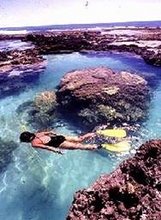
The Inconvenient Truth is indeed inconveninent for most to accept and perhaps acknowledge. Al Gore in the movie paints a deplorable future for planet earth and all life forms that live in it, including us. He eloquently presents the current situation and the trends that had been occuring all around us for decades, most of which seem trivial and isolated for a human being. But as he said, if we connect the dots, we will see the entire picture. Everything is indeed connected to everything else. The issues pertaining to the natural environment can no longer be ignored. Our very survival depends on our capability to stop our denials and act now. As I type, glaciers are melting, life forms are dying and becoming extinct (even before they are identified by science), viruses are mutating and the world is changing faster than it needs to. The most thought provoking part of the movie is when Al Gore said if we continue what we had been doing for years, that the map of the world may have to be re-drawn because most of the coastal areas will end up underwater. I wonder what will happen to the Philippines? How much of our 7,000+ islands will be underwater? He also exposes a conspiracy to play down the scientific projections of the future of our only home. Get a copy of the DVD and WATCH it! Then tell your friends,family and as many people about it. It will not win an Oscar for nothing.













